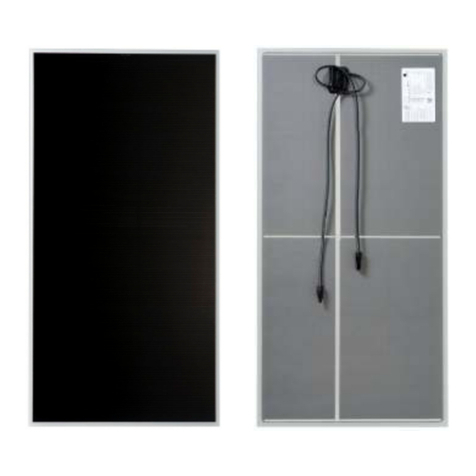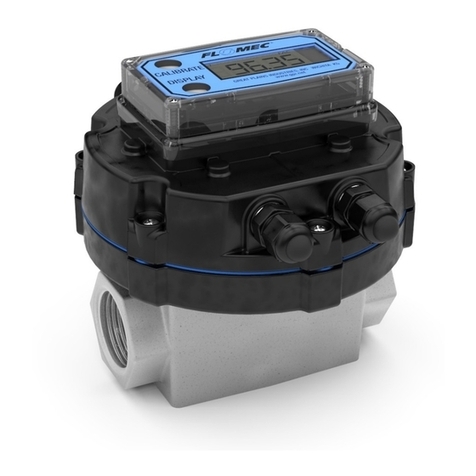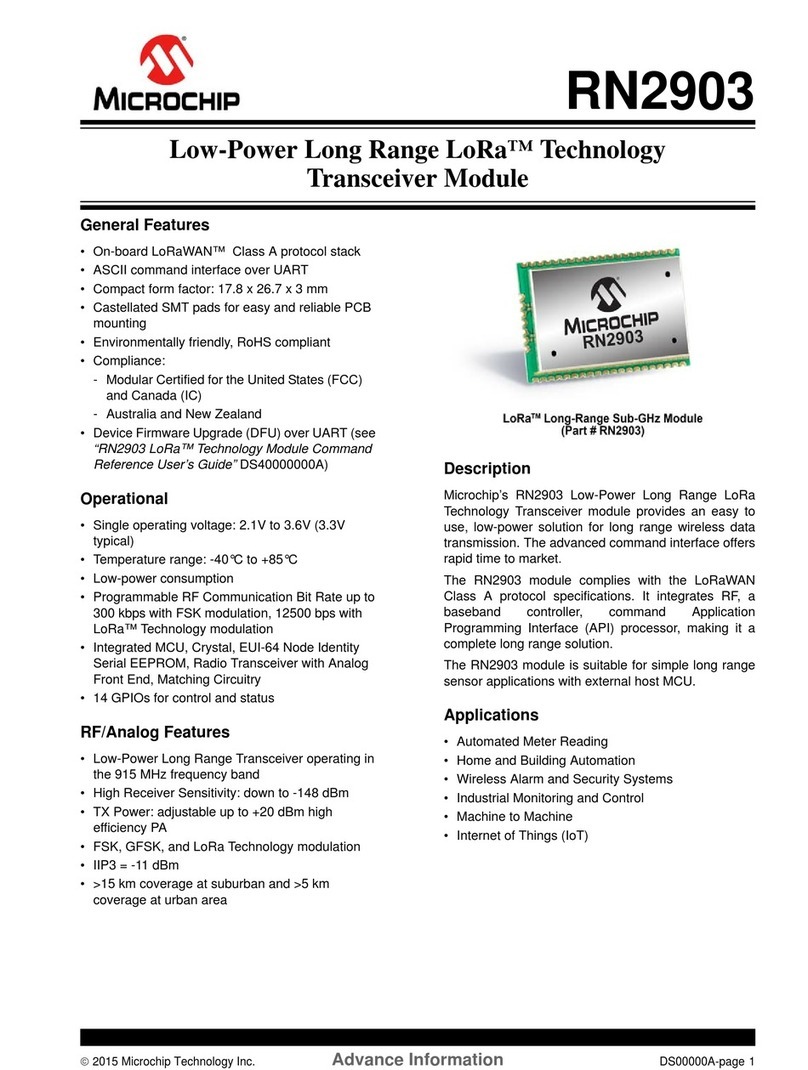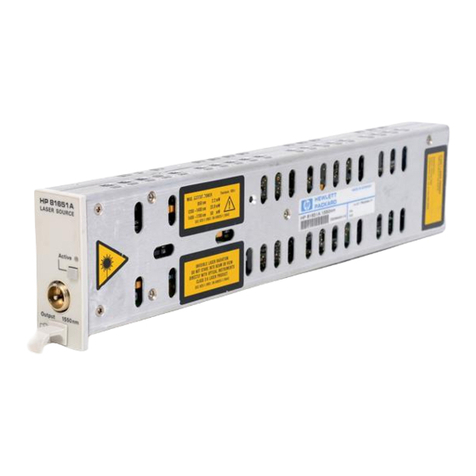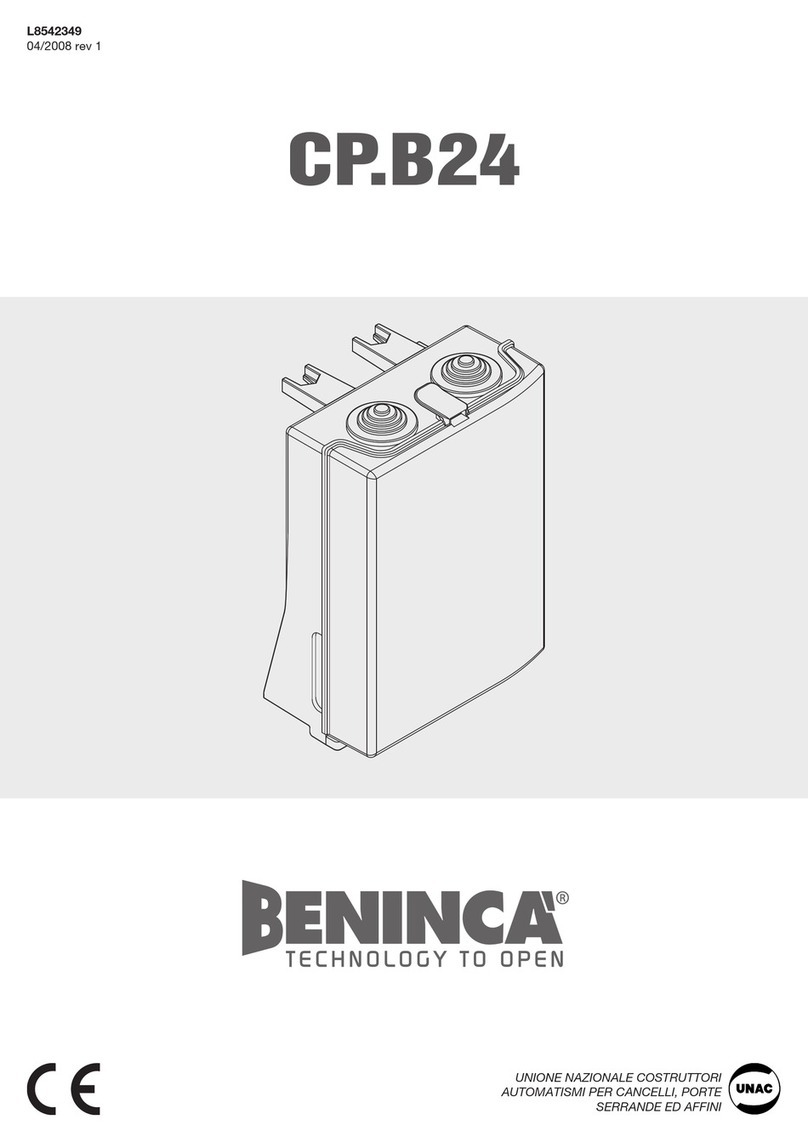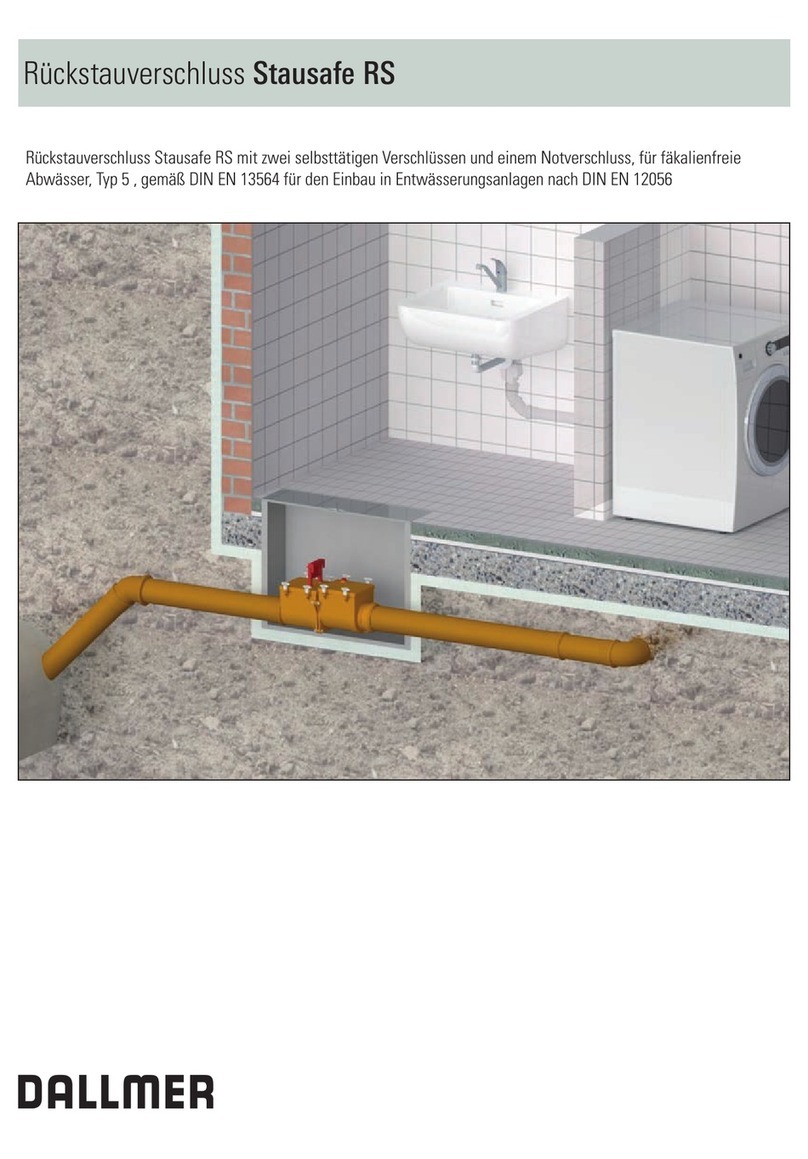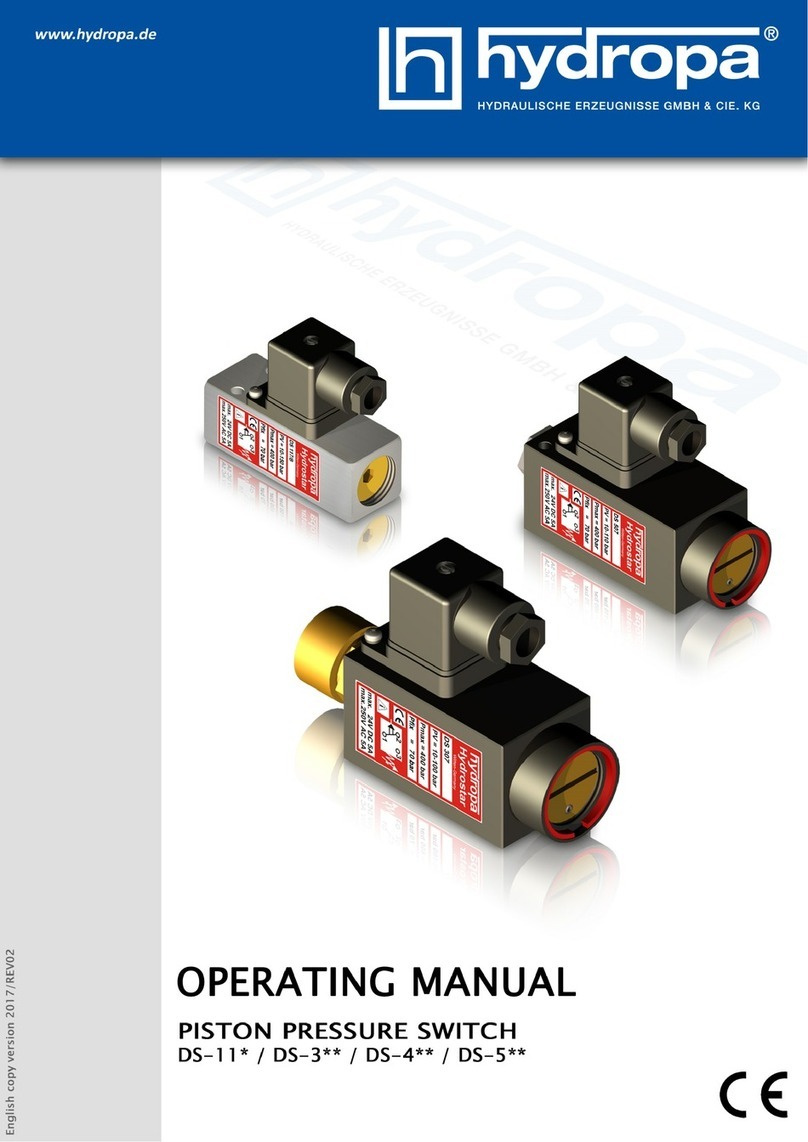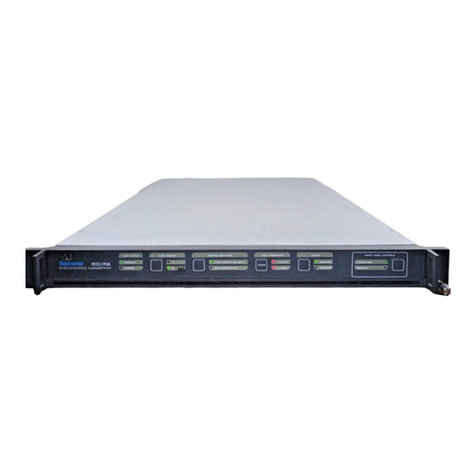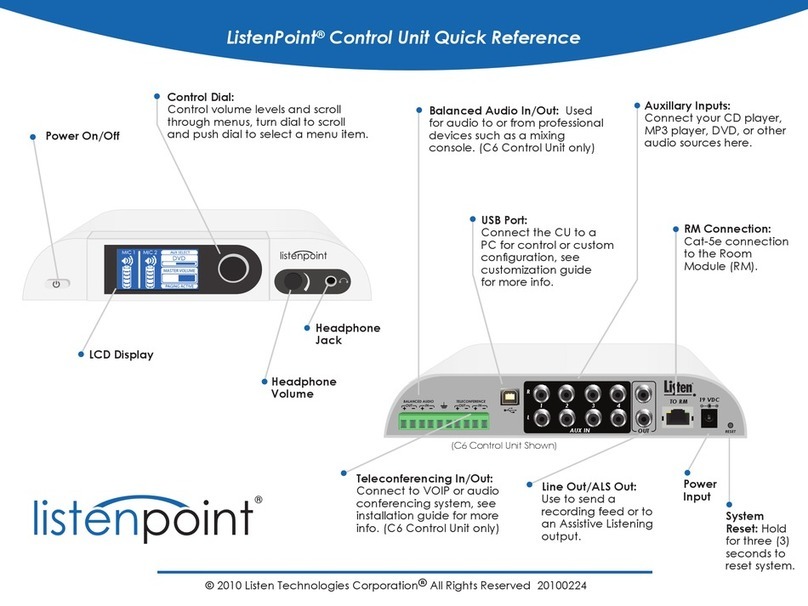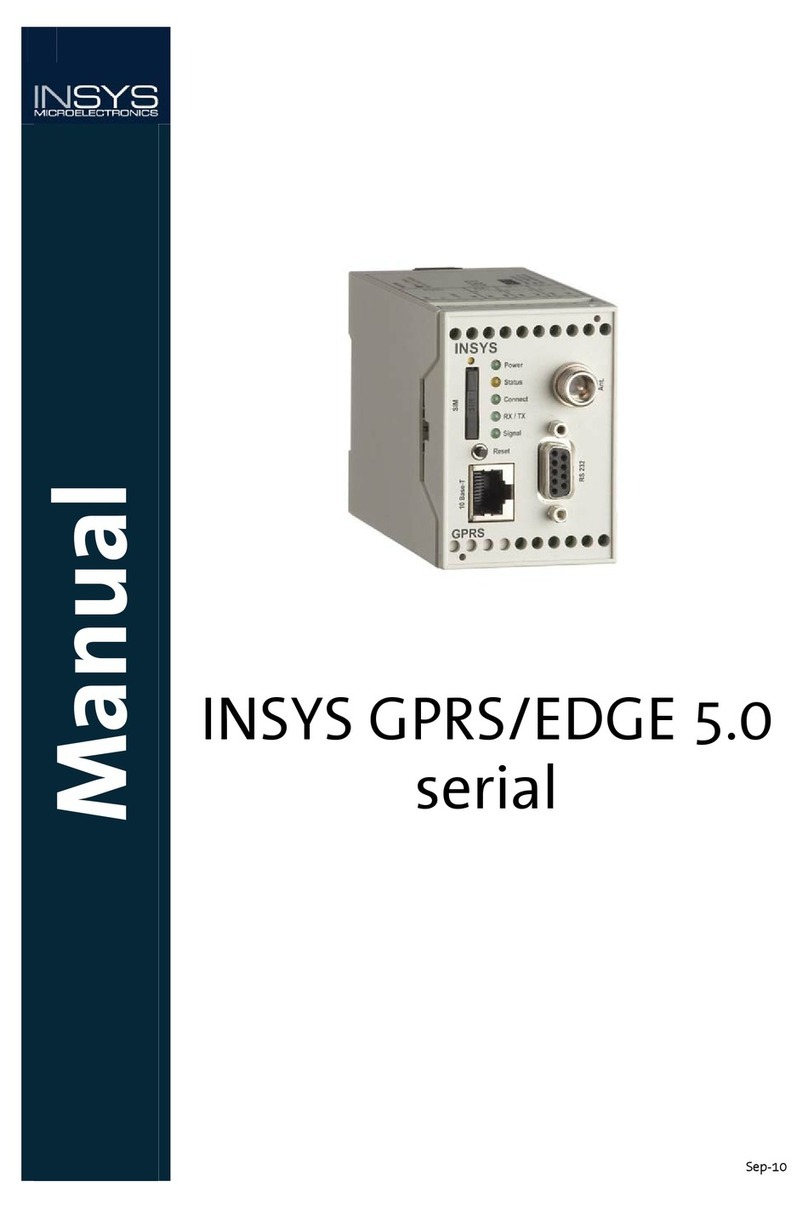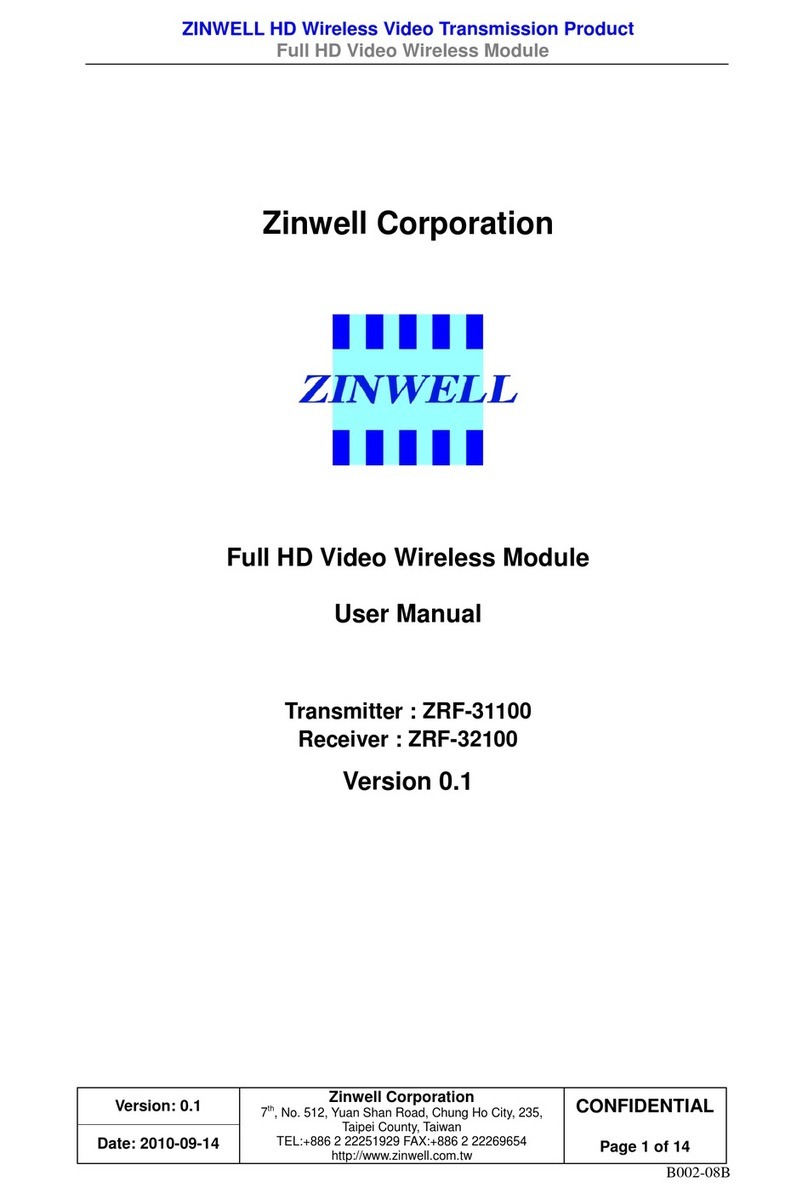First Solar 6 Series User manual

First Solar Series 6™ Modules | USER GUIDE
PD-5-200-06
Global
REV 5.0

FIRST SOLAR First Solar Series 6™ Modules | USER GUIDE i of 29
© FIRST SOLAR, INC. | PD-5-200-06 REV 5.0
COPYRIGHT AND NOTICES
© Copyright 2020 First Solar, Inc. | | PD-5-200-06 Rev 5.0 | FIRST SOLAR SERIES 6 MODULE USER GUIDE.
All rights reserved. No part of this document may be reproduced in any form or by any electronic or
mechanical means, including information storage and retrieval systems, without permission in writing from
First Solar.
NOTICE
First Solar reserves the right to make changes in solar module design and/or specifications at any time
without notice. Accordingly, the reader is cautioned to verify that data sheets are current before placing
orders or finalizing system permitting and/or design. Information furnished by First Solar is believed to be
accurate and reliable. However, no responsibility is assumed by First Solar or its subsidiaries for its use; nor
for any infringements of patents or other rights of third parties, which may result from its use. No license is
granted by implication or otherwise under any patent or patent rights of First Solar or its subsidiaries.
CONTACT INFORMATION
For information regarding First Solar and its products, please visit www.firstsolar.com. First Solar has an
extensive library of supporting Application Notes that can be made available upon request from technical
support technicalsupport@firstsolar.com.
GLOBAL
First Solar, Inc.
P.O. Box 730
Toledo, OH USA 43697-0730
Tel: +1 (602) 414-9300
Fax: +1 (602) 414-9400

FIRST SOLAR First Solar Series 6™ Modules | USER GUIDE ii of 29
© FIRST SOLAR, INC. | PD-5-200-06 REV 5.0
TABLE OF CONTENTS
1INTRODUCTION 1
2SAFETY 2
3REGULATORY COMPLIANCE 4
4PRODUCT IDENTIFICATION & RATINGS 5
4.1 PRODUCT IDENTIFICATION & RATINGS 5
4.2 SYSTEM DERATING FACTORS 6
5HANDLING & STORAGE 7
6MECHANICAL SPECIFICATIONS 8
7INSTALLATION & MOUNTING 11
7.1 MOUNTING 11
7.2 MOUNTING LOCATIONS & LOAD RATINGS 11
7.3 SERIES 6 PLUS MODULES – REQUIRED ENGINEERING PRACTICES 13
7.4 TOP MOUNTING 14
7.5 SPEEDSLOT MOUNTING 15
7.6 MODULE ORIENTATION 16
7.7 MODULE SHADING CONSIDERATIONS 16
7.8 WIRE MANAGEMENT 17
7.9 ELECTRICAL INTERCONNECTION 19
7.10 INVERTER COMPATIBILITY 20
7.11 GROUNDING METHOD 21
8MAINTENANCE 23
8.1 MAINTENANCE 23
8.2 MODULE CLEANING GUIDANCE 24
8.3 MODULE DISPOSAL 25
9REVISION HISTORY 26

FIRST SOLAR First Solar Series 6™ Modules | USER GUIDE 1 of 29
1INTRODUCTION
This document provides information on First Solar Series 6 Modules of model types FS-6XXX and FS-6XXXA
and First Solar Series 6 Plus Modules of model types FS-6XXX-P and FS-6XXXA-P for system designers,
installers, and maintenance personnel (“XXX” references the module power rating). Model types including
‘A’ contain an anti-reflective coating (ARC) on the front side surface. Series 6 Modules and Series 6 Plus
Modules are electrically compatible.
Note: This document will refer to Series 6 Modules and Series 6 Plus Modules as “Series 6 Modules”
unless specified otherwise.
Series 6 Modules are designed to have a long operating life and high energy yield when installed, operated,
and serviced in accordance with the instructions in this User Guide. Read this User Guide thoroughly before
beginning any work related to installation, operation, or maintenance.
Please refer to your First Solar Module Warranty Terms & Conditions for module warranty terms and product
return policies. Failure to follow this User Guide may void your warranty.
Keep this User Guide for future reference and provide to all subsequent owners or users of the
solar modules. Updates may be found at www.firstsolar.com.

FIRST SOLAR First Solar Series 6™ Modules | USER GUIDE 2 of 29
© FIRST SOLAR, INC. | PD-5-200-06 REV 5.0
2SAFETY
All instructions and safety information should be read and understood before attempting to handle, install,
or electrically connect First Solar modules. Failure to follow safety, installation, and handling instructions
may result in injury. Only qualified personnel should install, operate, or maintain PV modules or systems.
Series 6 Modules are designed for 1000 V systems at altitudes up to 5000 m (16404 ft) per IEC 61730
and 3000 m (9842 ft) per UL 61730. Series 6 Modules are designed for 1500 V systems at altitudes up to
3000 m (9842 ft) per IEC 61730 and 2000 m (6561 ft) per UL 61730.
Select installation locations and module support structures to ensure modules and connectors (open or
mated) are never submerged in standing water.
DANGER
Series 6 Modules may produce up to 280 Volts DC (VDC) and up to 4.0 Amps when exposed to
sunlight. The danger increases as modules are connected together in series and/or parallel.
A single module or multiple interconnected modules can create a lethal shock hazard during
daylight hours, including periods of low light levels
.
DANGER
To avoid fire and/or injury
due to ground faults and associated electrical hazards:
►Do not unplug PV module connections while under load. Do not disconnect the module
connectors during daylight hours unless the module is in an open circuit condition.
►Replace modules with damaged wires immediately. Keep all array wiring out of reach of
non-qualified personnel.
►Do not concentrate light on the module in an attempt to increase power output.
►Never allow the PV array system voltage to exceed 1500 VDC under any condition.
►Replace broken modules immediately.
►Repair ground faults immediately.
►Do not work on modules or systems when the modules or wiring is wet.
►All building mounted PV systems should utilize Ground Fault Detector Interrupters (GFDI)
and ARC Fault Circuit Interrupters to minimize risk of electrical shocks and fires.
Series 6 Modules have a maximum series fuse rating of 5.0A as defined by UL 1703 and a maximum
overcurrent protection rating of 5.0A as defined by UL 61730/IEC 61730-1/IEC 61730-2. Series 6 Modules
have a maximum overcurrent protection rating of 5.0A as defined by UL 61730/IEC 61730-1/IEC 61730-2.
PV systems should be designed to comply with and provide module overcurrent protection consistent with
local codes.

FIRST SOLAR First Solar Series 6™ Modules | USER GUIDE 3 of 29
© FIRST SOLAR, INC. | PD-5-200-06 REV 5.0
The conditions necessary to trigger reverse current overload (RCOL) do not occur in typical operating modes
of a properly installed PV system. The system designer should ensure that modules are not subjected to
RCOL. The use of GFDI devices or other advanced fault monitoring techniques can significantly reduce the
likelihood of sustained ground faults. Properly selected and installed string fuses can increase protection
against RCOL.
DANGER
Reverse currents
higher than the rated values for a First Solar module, may result in module
failure, including module breakage due to RCOL. Extreme and continuous RCOL conditions may
cause a fire or create electrical shock hazards. To avoid RCOL:
►Maintain equivalent voltage in parallel strings by installing an equal number of modules
per string within the same source circuit. Failure to install modules with balanced voltage
in parallel strings can result in voltage imbalance.
►Incorporate measures to protect modules against RCOL for connections of parallel strings.
Modules damaged because of system-induced RCOL are not covered under the First Solar Module
Warranty. Module warranty eligibility is not affected by the presence, absence, or type of reverse current
protection used in a system design.
CAUTION
Wear safety glasses
and cut-resistant gloves when working with non-interconnected modules or
system components.
Wear electrically rated PPE
when working with interconnected modules or system components.
Select PPE based on work consistent with local and/or national standards.
WARNING
To avoid risk of fire, do NOT interconnect Series 6 Modules with other FS Series Modules (e.g.–
Series 4, Series 3, or Series 2) within the same interconnected string, inverter, or Maximum
Power Point Tracker.

FIRST SOLAR First Solar Series 6™ Modules | USER GUIDE 4 of 29
© FIRST SOLAR, INC. | PD-5-200-06 REV 5.0
3REGULATORY COMPLIANCE
It is the responsibility of the installer and/or system integrator to ensure compliance with all local structural
and electrical codes, which may be applicable to the installation and use of First Solar Series 6 Modules.
►For systems installed in Canada, installation shall be in accordance with CSA C22.1, Safety
Standard for Electrical Installations, Canadian Electrical Code, Part 1.
For systems installed in North America, First Solar Series 6 Modules are Listed by a Nationally Recognized
Test Laboratory (NRTL) to UL 1703 or UL 61730, the standard for Flat-Plate Photovoltaic Modules and
Panels. To maintain the modules’ application as a UL Listed product:
►Use only components that have been Recognized or Listed by Underwriters Laboratories (UL) for
their intended purpose.
►Ensure the PV array open-circuit voltage does not exceed 1500 VDC (1000 VDC for UL Canada).
►Install modules with mounting systems that have been evaluated for UL Listed application.
►Protect modules from reverse currents in excess of the 5.0A maximum series fuse rating.
►The module is considered to be in compliance with the applicable UL standard only when the
module is mounted in the manner specified by the mounting instructions in this User Guide.
►A module with exposed conductive parts is considered to be in compliance with the applicable UL
standard only when it is electrically grounded in accordance with this User Guide and the
requirements of the National Electrical Code, ANSI/NFPA 70.
Series 6 Modules are tested and certified per IEC 61730-1/IEC 61730-2 and meet Class II requirements for
1500 VDC systems.
Series 6 Modules are tested and certified per IEC 61215-1/IEC 61215-1-2/IEC 61215-2 for a maximum
system voltage of 1500 V.

FIRST SOLAR First Solar Series 6™ Modules | USER GUIDE 5 of 29
© FIRST SOLAR, INC. | PD-5-200-06 REV 5.0
4PRODUCT IDENTIFICATION & RATINGS
4.1 PRODUCT IDENTIFICATION & RATINGS
Each module is equipped with a product label on the back and laser-etched identification on the front glass.
The label identifies the model number, nameplate electrical ratings, and safety information.
The module Rated Power is denoted in the ‘XXX’ position of the base Model Number format of FS-6XXX.
(Example: FS-6440A has a Rated Power of 440W)
The ratings in Table 1 are UL Listed with a tolerance of ±10% unless otherwise noted.
Note: Electrical specifications are subject to change. See label for final electrical ratings.
Table 1: Model Numbers & Ratings at Standard Test Conditions (STC1)
RATED POWER2
(-0/+5%)
VOLTAGE AT
PMAX
CURRENT AT
PMAX
OPEN CIRCUIT
VOLTAGE
SHORT CIRCUIT
CURRENT
MAX SYSTEM
VOLTAGE
MAX SERIES
FUSE
P
MAX
(W)
V
MAX
(V)
IMAX(A)
VOC(V)
ISC(A)
V
SYS
(V)
ICF(A)
390.0 173.9 2.24 214.8 2.49
150035.0
395.0 175.0 2.26 215.4 2.50
400.0 176.1 2.27 216.1 2.51
405.0 177.2 2.29 216.8 2.52
410.0 178.3 2.30 217.4 2.52
415.0 179.3 2.31 218.1 2.53
420.0 180.4 2.33 218.5 2.54
425.0 181.5 2.34 218.9 2.54
430.0 182.6 2.36 219.2 2.54
435.0 183.6 2.37 219.6 2.55
440.0 184.7 2.38 220.0 2.55
445.0 185.7 2.40 220.4 2.56
450.0 186.8 2.41 221.2 2.57
455.0 187.7 2.42 222.0 2.58
460.0 188.8 2.44 222.9 2.59
1As received and stabilized ratings at STC (1000 W/m², AM 1.5 25±2°C Cell Temperature) ±10%
2Measurement uncertainty applies
3Model Types 1000 V Listed for UL Canada

FIRST SOLAR First Solar Series 6™ Modules | USER GUIDE 6 of 29
© FIRST SOLAR, INC. | PD-5-200-06 REV 5.0
Table 2: Temperature Characteristics
TEMPERATURE CHARACTERISTICS
Module Operating Temperature Range (°C) -40 to +85
Temperature Coefficient of PMAX
T
k
(P
MAX
)
-0.32%/°C (Temperature Range: 25°C to 75°C)
Temperature Coefficient of VOC
T
k
(V
OC
)
-0.28%/°C
Temperature Coefficient of ISC
T
k
(I
SC
)
+0.04%/°C
4.2 SYSTEM DERATING FACTORS
Under normal operation, a PV module may experience conditions that produce higher current and/or
voltage than reported at STC. Accordingly, the values of Isc and Voc listed for STC should be multiplied by a
factor of 1.25 when determining component voltage ratings, conductor current ratings, and size of controls
connected to the PV output. For UL installations, an additional 1.25 safety factor for short circuit current
may be applicable, reference the National Electric Code (NEC) Article 690 for further details. Specific site
conditions and local electric code requirements must be used for determining the maximum system
voltage.
When calculating module Voc at 125 mW/cm2, AM 1.5 spectrum, and cell temperature of -10°C,
multiply the specific model type STC listed Voc value by a factor of 1.109. When calculating module Isc
at 125 mW/cm2, AM 1.5 spectrum, and cell temperature of 75°C, multiply the specific model type STC
listed Isc value by a factor of 1.275.

FIRST SOLAR First Solar Series 6™ Modules | USER GUIDE 7 of 29
© FIRST SOLAR, INC. | PD-5-200-06 REV 5.0
5HANDLING & STORAGE
When handling packs using forklifts or other mechanical aids, ensure uniform pack support, and the forks
fully extend under the pallet. Packs can be lifted from either the short or long side of the pallet. Forklifts
must engage the pallet a minimum of 1.3 m (51 in) for long side engagement and a minimum of 1.5 m (60
in) for short side engagement. Failure to meet engagement lengths may damage pallet and modules on
bottom of pack.
Modules on a pack may lean or shift on a pallet during shipping. It is recommended to unload shifted packs
one at a time. If any damage is observed, use the Delivery Note to document affected pallets and contact
technicalsupport@firstsolar.com.
Only originally banded, fully intact and loaded packs may be stacked for storage up to two high for three
weeks on site or extended periods in a warehouse. Packs should not be stacked if rebanded on site, if any
corner braces or top cap material has been removed, or if any banding is broken from the pack.
►Do not transport stacked packs around project site.
►Do not attempt to transport the pack once the straps have been removed.
Please evaluate site conditions for safe pack storage as uneven or recently disturbed ground and moisture
may affect pack stability. Packs are not intended for long-term outdoor storage. Packs should not be
exposed to standing water higher than half the height of the pallet.
WARNING
Open the packaging with care. A single person should not attempt to lift a Series 6 Module. Lift the
modules from the pallet with two or more persons or with lift assist.
Do not attempt to lift multiple
modules off the stack at the same time.
During handling and installation, do not make abrasive contact with top glass surface to prevent
scratches of ARC film.
The pack’s cap includes two green markings for module orientation purposes. The long edge orientation
mark corresponds to the side of the module with the positive junction box cable.
FS-6XXX/ FS6XXXA / FS-6XXX-P / FS6XXXA-P
FS-6XXX-P-I / FS6XXXA-P-I
Figure 1: Model Type Pack Identification

FIRST SOLAR First Solar Series 6™ Modules | USER GUIDE 8 of 29
© FIRST SOLAR, INC. | PD-5-200-06 REV 5.0
6MECHANICAL SPECIFICATIONS
Figure 2: Series 6 Module Mechanical Drawing

FIRST SOLAR First Solar Series 6™ Modules | USER GUIDE 9 of 29
© FIRST SOLAR, INC. | PD-5-200-06 REV 5.0
Table 3: Series 6 Module Mechanical Specifications
DIMENSION
SPECIFICATION
MODEL TYPE
DETAILS
A Length
FS-6XXX / FS-6XXXA 2009 mm +3/-1 mm (79.1 +0.11 / -0.04 in)
FS-6XXX-P / FS-6XXX-P
FS-6XXX-P-I / FS-6XXXA-P-I 2024 mm +3/-1 mm (79.7 +0.11/-0.04 in)
B Width
FS-6XXX / FS-6XXXA 1232 mm ± 2 mm (48.5 ± 0.08 in)
FS-6XXX-P / FS-6XXXA-P
FS-6XXX-P-I / FS-6XXXA-P-I 1245 mm ± 2 mm (49.0 ± 0.08 in)
C Height
FS-6XXX / FS-6XXXA
FS-6XXX-P / FS-6XXXA-P 49 mm ± 1 mm (1.9 ± 0.04 in)
FS-6XXX-P-I / FS-6XXXA-P-I 45.5 mm ± 1 mm (1.8 ± 0.04 in)
D Junction Box
Lead Wire4
FS-6XXX / FS-6XXXA 2.5 mm² (14 AWG)
720 mm (28.35 in) (+) & Bulkhead (-)
FS-6XXX-P / FS-6XXX-P
FS-6XXX-P-I / FS-6XXXA-P-I
2.5 mm² (14 AWG)
733 mm (28.86 in) (+) & Bulkhead (-)
Total Area
FS-6XXX / FS-6XXXA 2.47 m² (26.5 ft²)
FS-6XXX-P / FS-6XXXA-P
FS-6XXX-P-I / FS-6XXXA-P-I 2.52 m² (27.1 ft²)
Module Weight5
FS-6XXX / FS-6XXXA 34.5 ± 1 kg (76 ± 2.2 lbs)
FS-6XXX-P / FS-6XXXA-P 34.9 ± 1 kg (76.9 ± 2.2 lbs)
FS-6XXX-P-I / FS-6XXXA-P-I 34.2 ± 1 kg (75.4 ± 2.2 lbs)
Fire Performance6
FS-6XXX / FS-6XXXA
FS-6XXX-P / FS-6XXXA-P
FS-6XXX-P-I / FS-6XXXA-P-I
Type 19: Class A Spread of Flame /
Class C Burning Brand
4Length from junction box exit to connector mating surface
5When designing structure components for systems with mixed model types (mixed ‘-P’ and ‘-P-I’ model suffixes) the larger nominal
weight should be used to enable flexibility to utilize ‘-P’ modules universally in any array mounting position.
6Module UL 1703 fire rating is valid only when mounted in the manner specified in this User Guide. Roof mounted fire rating is
established by assessing rack and module as a unit. External fire source resistance has not been evaluated.

FIRST SOLAR First Solar Series 6™ Modules | USER GUIDE 10 of 29
© FIRST SOLAR, INC. | PD-5-200-06 REV 5.0
For Model Types FS-6XXX / FS-6XXXA
For Model Types FS-6XXX-P / FS-6XXXA-P / FS-6XXX-P-I / FS-6XXXA-P-I
Figure 3: Grounding Hole & Wire Management Hole Detail from Frame Center
Figure 4: Long Edge Frame Detail with SpeedSlotTM Dimensions
FS-6XXX / FS-6XXXA / FS-6XXX-P / FS-6XXXA-P
FS-6XXX-P-I / FS-6XXXA-P-I
Figure 5: Long Edge Frame Detail by Model Type

FIRST SOLAR First Solar Series 6™ Modules | USER GUIDE 11 of 29
© FIRST SOLAR, INC. | PD-5-200-06 REV 5.0
7INSTALLATION & MOUNTING
7.1 MOUNTING
It is best practice to complete heavy construction and trenching prior to module installation to minimize
module exposure to dust. Ensure any site preparation or maintenance chemicals (soil binding agents or
chemicals used for on-site dust control or weed control) do not spray, splash, or drift onto the surface of the
modules or its associated components.
It is the responsibility of the qualified engineer and/or qualified installer to ensure the system and its
components meet applicable structural and electrical code requirements for the product application’s
jurisdiction. First Solar is not responsible for bonding failure, breakage, damage, wear, corrosion, or module
performance issues that are deemed to be caused by design or installation practices that do not comply
with this User Guide.
CAUTION
Safety hazards or potentially unsafe practices:
►Do not install the modules during high wind or wet conditions.
►Handle modules with care during installation, as heavy impact to the front, back, or
edges could result in damage to the module. Do not impact module with hammer to
aid installation process.
►Do not walk, stand, or sit on modules.
►Do not carry multiple modules on top of one another after removal from pack.
►Do not lift or pull on modules using lead wire or junction boxes.
►Do not rest objects (such as tools, etc.) on module glass.
Modules must have adequate ventilation and airflow to prevent operating temperatures above 85°C.
For rooftop mounting, mount modules over a fire resistant roof covering rated for the application. The
recommended minimum standoff height is 8 cm (3.15 in). Series 6 Modules may be installed at an
installation angle up to 60°.
7.2 MOUNTING LOCATIONS & LOAD RATINGS
The interface of the mounting structure to the module frame must meet the technical requirements
specified in this User Guide. The mounting system design must provide adequate support for the module to
prevent load damage from occurring based on the loading requirements for the given application and the
chosen mounting locations. Structures must not come into direct contact with the surface or edges of the
module glass or center cross brace(s).
Modules can be secured to the support structure with top (front side) mounting clamps or by frame slots,
known as SpeedSlots.

FIRST SOLAR First Solar Series 6™ Modules | USER GUIDE 12 of 29
© FIRST SOLAR, INC. | PD-5-200-06 REV 5.0
Series 6 Modules have been evaluated to operate in an ambient air temperature range of -40°C to +40°C
and have been tested to wind/snow loads as detailed in Tables 4.1 and 4.2. Test loads include a safety
factor of 1.5 above the design loads.
Series 6 Modules meet the following load ratings when mounted as specified in this User Guide and
evaluated according to the listed standard in Tables 4.1 and 4.2.
Table 4.1: Series 6 Module Load Ratings
Model
Types
Mount
Config
Symmetrical
Four-point
Mount
Location
IEC 61215 / IEC 61730
UL 1703
UL 61730
Design
Load
Test Load
Design
Load
Test Load
Design
Load
Test Load
FS-6XXX
FS-6XXXA A
Top Mount:
Range of
400mm to 1200
mm (C/C)
SpeedSlot
Mount:
400 mm
800 mm
1200 mm
± 1600 Pa
(± 33.4
lb/ft2)
± 2400 Pa
(± 50.1
lb/ft2)
± 1436 Pa
(± 30 lb/ft2)
± 2154 Pa
(± 45 lb/ft2)
± 1600 Pa
(± 33.4
lb/ft2)
± 2400 Pa
(± 50.1
lb/ft2)
Table 5.2: Series 6 Plus Module Load Ratings
Model
Types
Mount
Config.
Symmetrical
Four-point
Mount
Location
IEC 61215 / IEC 61730
UL 61730
Design Load
Test Load
Design Load
Test Load
FS-6XXX-P
FS-6XXXA-P A
Top Mount:
Range of
400mm to
1200 mm (C/C)
SpeedSlot
Mount:
400 mm
800 mm
1200 mm
± 1600 Pa
(± 33.4 lb/ft2)
± 2400 Pa
(± 50.1 lb/ft2)
± 1600 Pa
(± 33.4 lb/ft2)
± 2400 Pa
(± 50.1 lb/ft2)
FS-6XXX-P-I
FS-6XXXA-P-I
B7
Top Mount:
1200 mm (C/C)
SpeedSlot
Mount:
1200 mm
± 1600 Pa
(± 33.4 lb/ft2)
± 2400 Pa
(± 50.1 lb/ft2)
± 1600 Pa
(± 33.4 lb/ft2)
± 2400 Pa
(± 50.1 lb/ft2)
C
Top Mount:
Range of
400mm to
1000 mm (C/C)
SpeedSlot
Mount:
400 mm
800 mm
+1300 Pa / -900 Pa
(+27.2 / -18.8 lb/ft2)
+1950 Pa / -1350 Pa
(+40.7 / -28.2 lb/ft2)
Symmetrically secure the module using a minimum of four frame contact points regardless if mounted with
top clamps or with SpeedSlot clamps. Other mounting solutions not discussed in this User Guide (Such as -
asymmetric mounting, higher load ratings, alternative clamp geometry, etc.) may be permitted, but require
7FS-6XXX-P-I / FS-6XXXA-P-I Model Types are IEC 61215/IEC 61730 certified at Mounting Configuration B only when supplemented
with additional interface point(s). Consult First Solar for supplemental documentation.

FIRST SOLAR First Solar Series 6™ Modules | USER GUIDE 13 of 29
© FIRST SOLAR, INC. | PD-5-200-06 REV 5.0
evaluation by First Solar (technicalsupport@firstsolar.com). First Solar reserves the right to reasonable
access to validate proper installation.
►The modules shall have a minimum spacing gap of 6 mm (0.24 in) between each other. Usable
junction box lead wire lengths accommodate spacing up to 245 mm (9.65 in) (assuming no
substructure interference).
►Do not use module short edge frame sides or center cross braces for mounting unless specifically
evaluated and approved by First Solar in writing.
►Do not modify the module frame in any way. This includes drilling additional holes, altering mounting
features (slots), or otherwise cutting, trimming, or shaping any part of the module frame.
►Module mounting structure support under clamps must maintain a minimum bearing area length of
35 mm (1.38 in) and maintain full frame bottom flange engagement under load.
►Module attachment hardware (i.e. clamps, bolts, etc.) must not contact the module glass.
►Install clamps to the torque stated by the mounting hardware manufacturer.
►Mounting clamps certified/designed to electrically bond and/or ground the module frame are
allowed when used in accordance with the clamp manufacturer’s instructions.
►The maximum clamp force shall not exceed 5500 N for either top or SpeedSlot clamps.
►Minor clamp deformation under load may be acceptable as long as clamping force is maintained
and the deformation does not contribute to a weakening of the clamp or dislodgement of the
module.
7.3 SERIES 6 PLUS MODULES – REQUIRED ENGINEERING PRACTICES
Series 6 Plus Modules of model types of FS-6XXX-P-I / FS-6XXXA-P-I have a reduced mechanical design load
as allowed under its UL 61730 listing and depicted in Table 4.2. These modules are identified by “Reduced
mechanical design load” wording on the module nameplate label.
CAUTION
Model types FS-6XXX-P-I / FS-6XXXA-P-I shall not be used on rooftop systems and
may only be deployed in engineered PV systems, where the following conditions are
met:
•UL 61730 is the applicable certification standard (in any instance where a
module mounting method results in a <1600 Pa load capability per Table
4.2 or otherwise documented by First Solar.)
•The racking vendor has reviewed the project’s design conditions and
subsequently has issued a Module Pressure Zones document, indicating the
required module design pressures, both upward and downward, based on
the module’s location with the PV array.
•The project’s Structural Engineer of Record (SEOR) has reviewed the Module
Pressure Zones document, aligned it with the eligible installation locations
on the Site Layout, and verified that the design load ratings exceed the
design load ratings required.
Many project designs will choose to incorporate Series 6 Plus model types FS-6XXX-P-I / FS-6XXXA-P-I either
in full, or in zoned portions of an array combined with Series 6 Plus model types FS-6XXX-P / FS-6XXXA-P in
other zones. For these mixed design cases, the SpeedSlot mounting interface with universally consistent
interface dimensions for all Series 6 Plus Modules, is preferred in order to avoid managing the different top

FIRST SOLAR First Solar Series 6™ Modules | USER GUIDE 14 of 29
© FIRST SOLAR, INC. | PD-5-200-06 REV 5.0
clamp height dimensions between the different Series 6 Plus model types (See Figure 5). Also for these
mixed design cases, the Structural Engineer of Record must utilize the weight specification of the FS-6XXX-P
/ FS-6XXXA-P model types from Table 3 for structural racking design, top-of-pile calculations, and post
design calculations for all array positions. It is recommended all array positions be designed to
mechanically accommodate the FS-6XXX-P / FS-6XXXA-P model types, given their ability to be utilized in all
array zones. For the same reason, First Solar will typically provide these FS-6XXX-P / FS-6XXXA-P model
types as spares and/or warranty replacements.
7.4 TOP MOUNTING
Center each clamp +/- 12 mm (0.48 in) within mounting range or location (detailed in Tables 4.1 and 4.2)
to meet documented load ratings based on model type. Top mounting clamps must have a uniform frame
engagement area of 9 mm (0.35 in) minimum width on the top ledge and 30 mm (1.18 in) minimum length
as depicted below in Figure 6. Clamps that do not meet the minimum requirements may not preserve
module certifications or warranty and must be evaluated by First Solar (technicalsupport@firstsolar.com).
Figure 6: Shared Top Clamp Detail on Series 6 Modules

FIRST SOLAR First Solar Series 6™ Modules | USER GUIDE 15 of 29
© FIRST SOLAR, INC. | PD-5-200-06 REV 5.0
7.5 SPEEDSLOT MOUNTING
The Series 6 Module frames include six SpeedSlots on each side, as shown in Figure 7. SpeedSlot clamps
must either extend 10 mm (0.39 in) beyond the inner edge of the frame, or have a retention feature to
prevent module frame dislodgement under load. SpeedSlot clamps must be at least 12 mm (0.47 in) wide
from attachment point through the 10 mm (0.39 in) extension or until point of retention feature, shown in
Figure 8. Clamps should rest on the flat surface of the SpeedSlot.
Figure 7: SpeedSlot Detail on Series 6 Module Long Edge Frame
Figure 8: Shared SpeedSlot Clamp Detail on Series 6 Modules

FIRST SOLAR First Solar Series 6™ Modules | USER GUIDE 16 of 29
© FIRST SOLAR, INC. | PD-5-200-06 REV 5.0
7.6 MODULE ORIENTATION
PV performance modeling software, such as PlantPredict (http://www.plantpredict.com), should be used to
determine the optimum orientation and tilt angle for each location.
Mount modules in portrait orientation for applications where row-to-row shading could occur. Landscape
orientation is permitted only in flat mount applications where the module long edge is not completely
shaded and when compliant with Section 7.7 Module Shading Considerations.
7.7 MODULE SHADING CONSIDERATIONS
Specific shading patterns can cause damage to module cells
due to the creation of localized areas of reverse bias. Reverse
bias is generated by one or more series-connected cells being
shaded while the rest of the cells are fully illuminated. When
at-risk shading patterns occur, damage can occur in short
durations (seconds to minutes) and a wide range of irradiance
(as low as 160 W/m²).
There is no risk of module damage due to shading that occurs
while modules are in open circuit. Shading that occurs at a
distance greater than 2 m (6.6 ft), also known as diffuse
shading, carries minimal risk and should be avoided where
possible. Row-to-row shading of modules installed in portrait
orientation is acceptable.
There is a low risk of module damage due to shading from repeatedly walking or standing in front of
operating modules or from repeatedly parking or driving vehicles in front of operating modules during
illuminated times. It is best practice to stay close to the backside of the adjacent rack as one travels down a
row of operating modules.
Do not subject modules to high risk shading instances listed below:
►Resting or adhering slender objects (tools, brooms, clothing, wires, tape) on front-side of operating
modules, or when within ~1.5 to 2 m (~4.9 to 6.6 ft) above operating modules, especially when the
shadow is oriented parallel to cells
►Fixed objects within ~1.5 to 2 m (~4.9 to 6.6 ft) above operating modules that cast a shadow over
the long dimension of the cells. Close objects (posts, ropes, fences, etc.) can begin to increase risk
of partial shading of full cells when within ~1.5 to 2 m (~4.9 to 6.6 ft) from the front-side of
operating module
►A support frame or mounting method on the long edge(s) of modules that fully shades the entire
length of a cell (either partially or completely)
►Cleaning robots or other mechanisms that traverse the module while the system is operating
►Row-to-row shading when the modules are installed in landscape orientation
►Closely “stair-stepped” trackers on northerly slopes (northern hemisphere), or southerly slopes
(southern hemisphere).
Figure 9: Example of at-risk Shading
Patterns

FIRST SOLAR First Solar Series 6™ Modules | USER GUIDE 17 of 29
© FIRST SOLAR, INC. | PD-5-200-06 REV 5.0
7.8 WIRE MANAGEMENT
All wire management shall comply with the applicable NEC/IEC codes and standards for maintaining and
managing wires, as well as any applicable local requirements determined by local authorities having
jurisdiction. This document includes evaluation of general wire management requirements based on
interpretation of the following codes and standards and does not substitute for a comprehensive evaluation
of applicable requirements:
►NEC 2017
o300.3(C)(2) – Conductors of Different Systems
o334.30 – Support and Securement Spacing
o338.24 – Cable Bend Radius Requirements for Type USE cable
►IEC
o62548:2016, 7.3.7.3 – Erection Method
o62548:2106, 7.3.8 – Segregation of AC and DC Circuits
o60364-5-52:2009, 522.8.3 – Cable Bend Radius
Below is a list of best practices that applies to the majority of wire management scenarios:
►The connectors, X/T joints, and in-line fuses should not be in direct contact with the metal frame or
structure. It is recommended that insulated cables do not come in direct contact with the metal
frame or structure, unless unavoidable, to minimize stresses on components.
►The installation of harnesses, harness jumpers, harness whips, and PV array cables (or “Homerun”
cables) should not subject the connectors, X/T joints, and in-line fuses to tensile loads.
►Cable ties should be a minimum distance of 25mm (1 in) from connectors, X/T joints, and in-line
fuses.
►Cables should not maintain constant contact with the edges of glass-to-glass solar module
laminates.
►Cable ties should be tensioned such that there is at least 13mm (0.5 in) (two-finger-gap) between
the top of the cable bundle and the bottom of the frame.
Other manuals for 6 Series
1
Table of contents
Other First Solar Control Unit manuals
Popular Control Unit manuals by other brands
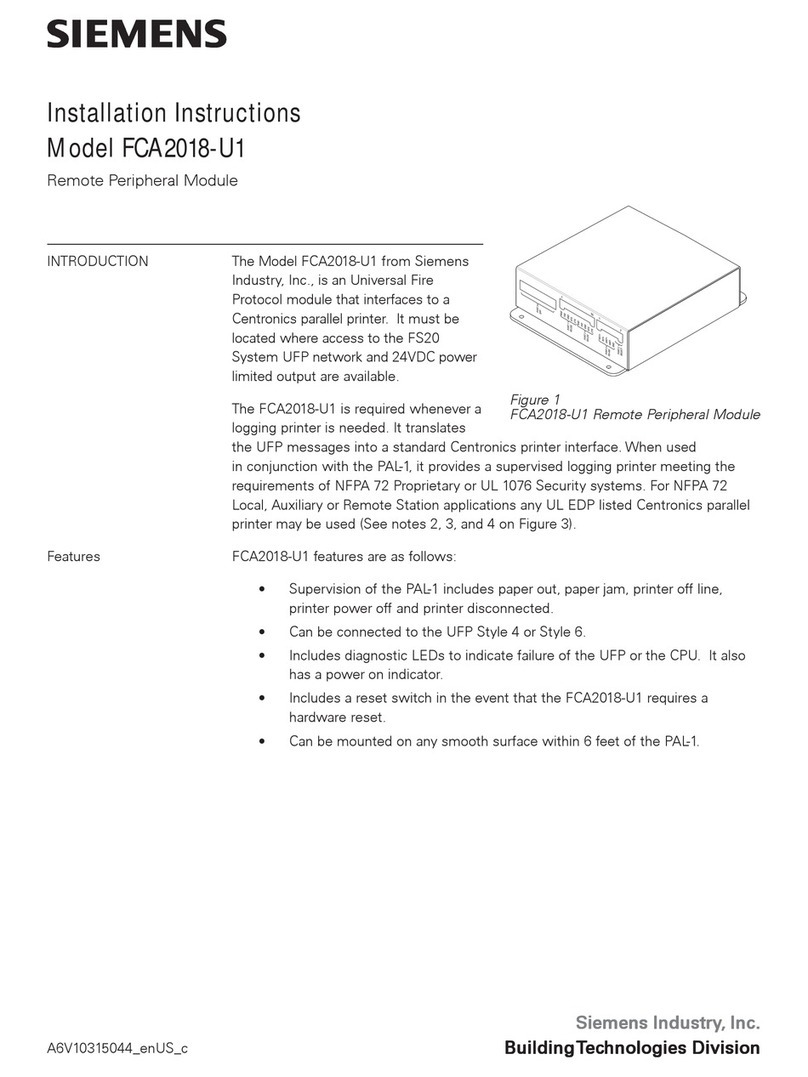
Siemens
Siemens FCA2018-U1 installation instructions
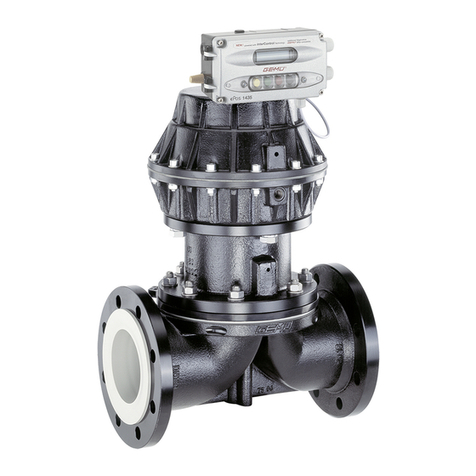
GEM
GEM 620 Series Assembly instructions
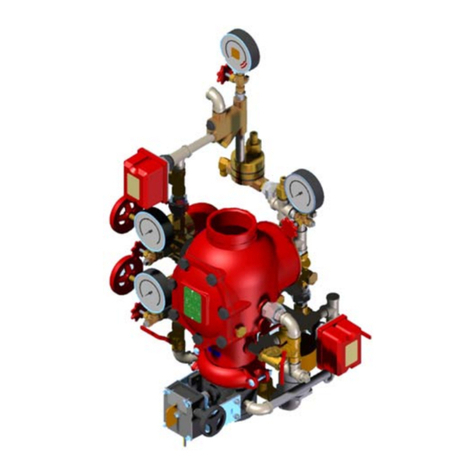
Victaulic
Victaulic FireLock NXT 764 Series Installation, Maintenance, and Testing Manual
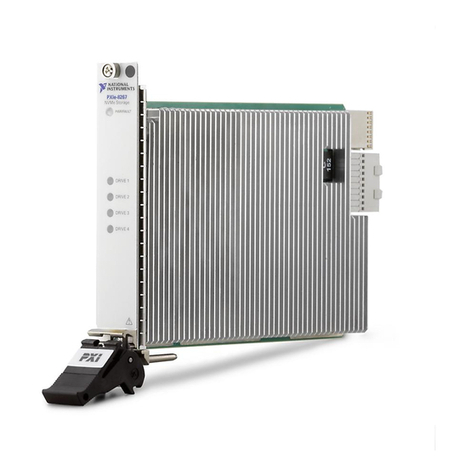
National Instruments
National Instruments PXIe-8267 Getting started guide
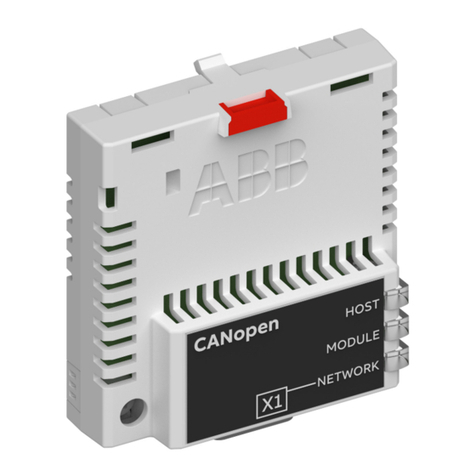
ABB
ABB FCAN-01 Quick installation and start-up guide
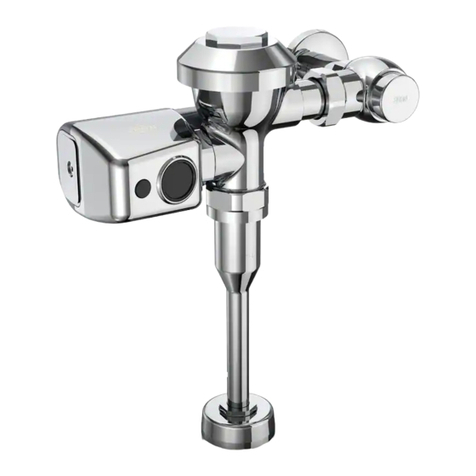
ZURN
ZURN AquaSense ZER-W2 Series Installation, operation, maintenance and parts manual

